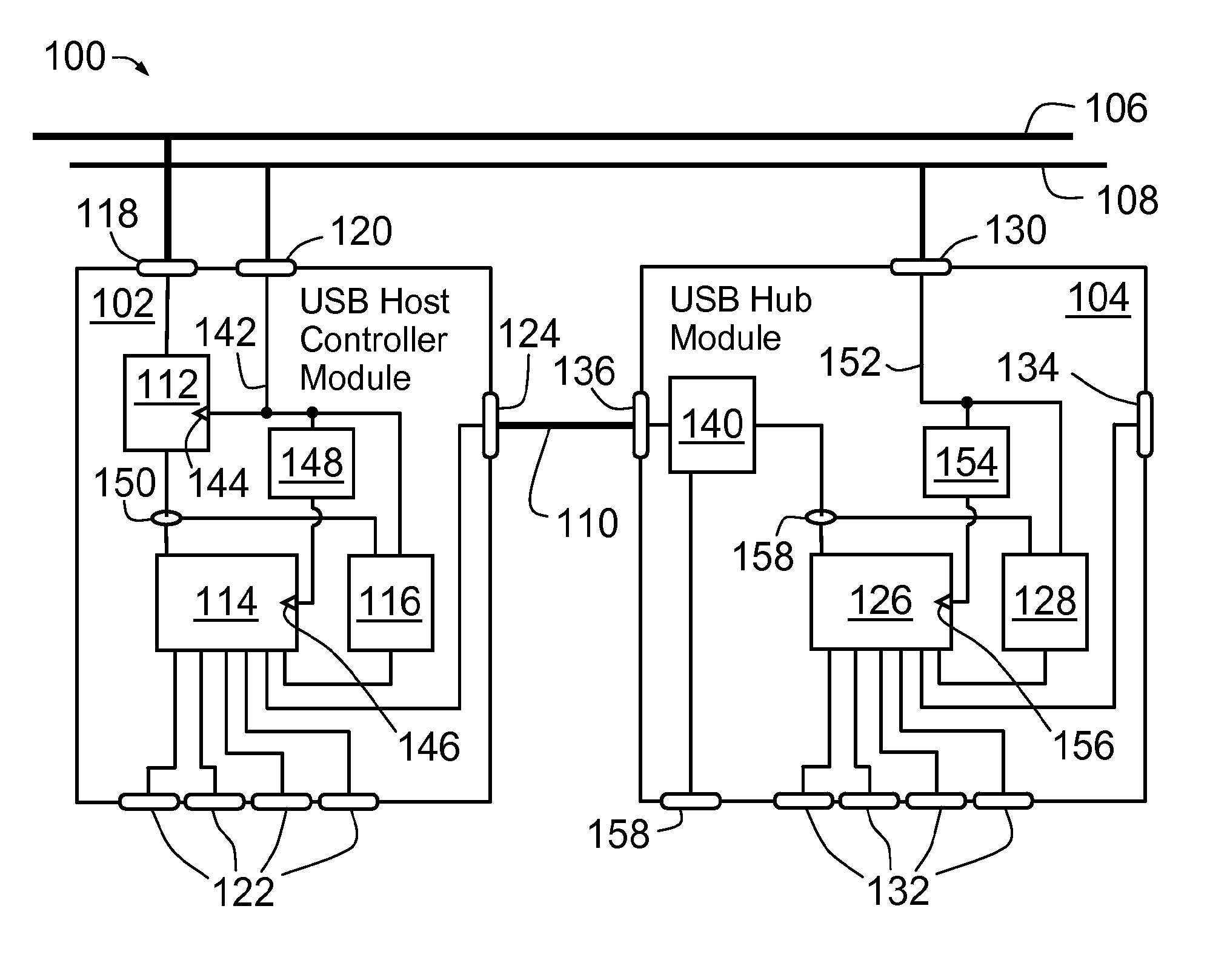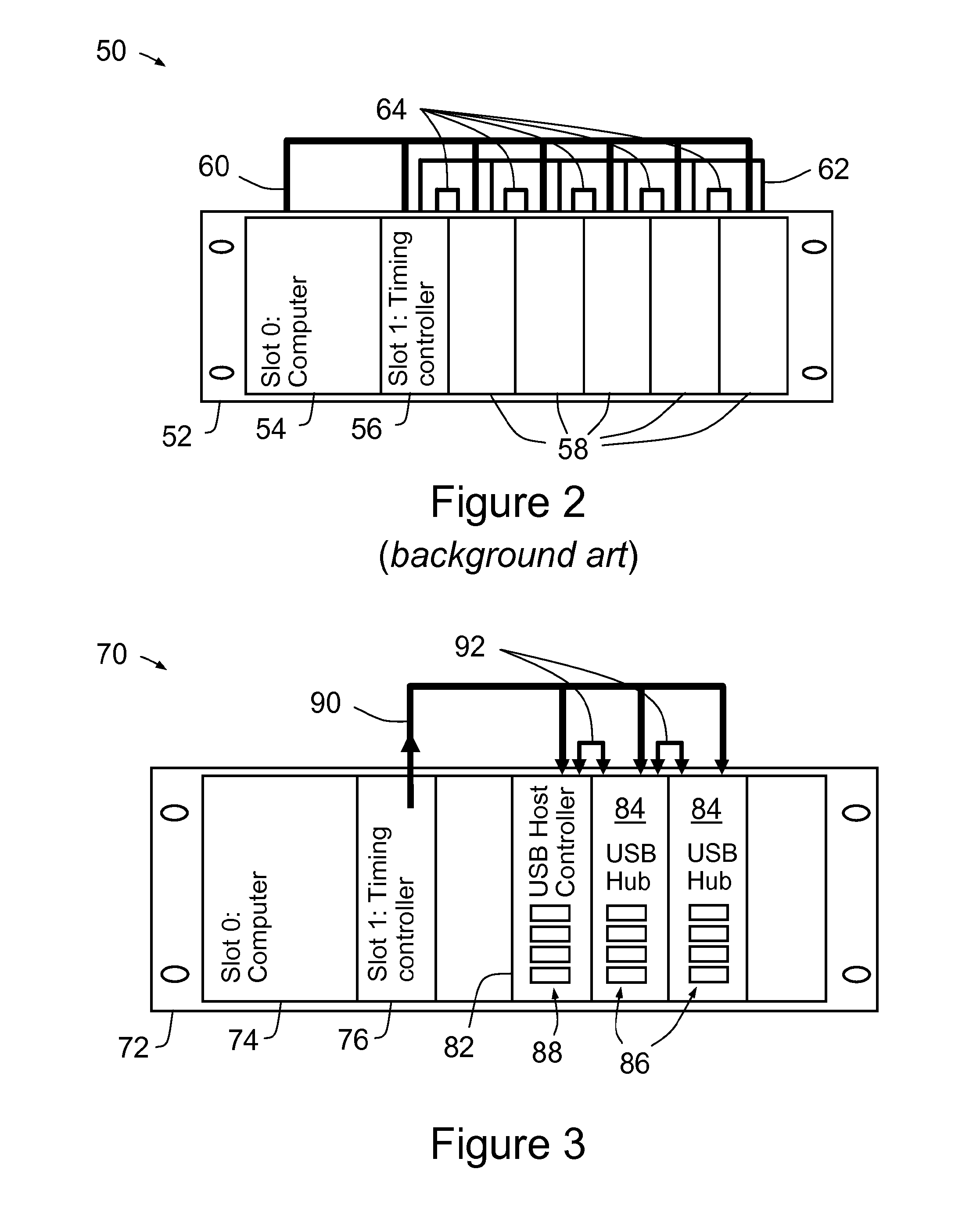High density, low jitter, synchronous USB expansion
a high density, synchronous usb technology, applied in the direction of synchronisation signal speed/phase control, instruments, generating/distributing signals, etc., can solve the problems of usb 2.0 specification lacked a mechanism for synchronising devices to any great precision, inter-device synchronization is not addressed, usb 2 lacked a jitter reduction effect, etc., to achieve the effect of reducing jitter in retransmission
- Summary
- Abstract
- Description
- Claims
- Application Information
AI Technical Summary
Benefits of technology
Problems solved by technology
Method used
Image
Examples
Embodiment Construction
[0086]FIG. 2 is a schematic representation of the architecture of a PXI instrumentation chassis 50 according to the background art. The PXI chassis 52 contains a slot 54 for a computer (viz. slot 0 of chassis 52, which typically houses a rugged embedded PC), a timing controller slot 56 (viz. slot 1 of chassis 52), and a plurality of expansion slots 58. These components are connected by several busses 60, 62, 64 across the backplane (which also provides power to the modules as required).
[0087]Main communication is provided across the PCI bus 60. All data is transferred between the embedded computer (connected to slot 0) and attached timing controller (connected to slot 1) and plug-in modules 58 across PCI bus 60. Slot 1 may contain a special timing controller device that provides coordination of the different plug-in modules via delivery of clock and trigger event signals across the backplane's Star Trigger Bus 62. Finally a PXI Local Bus 64 is provided for sideband communication bet...
PUM
 Login to View More
Login to View More Abstract
Description
Claims
Application Information
 Login to View More
Login to View More - R&D
- Intellectual Property
- Life Sciences
- Materials
- Tech Scout
- Unparalleled Data Quality
- Higher Quality Content
- 60% Fewer Hallucinations
Browse by: Latest US Patents, China's latest patents, Technical Efficacy Thesaurus, Application Domain, Technology Topic, Popular Technical Reports.
© 2025 PatSnap. All rights reserved.Legal|Privacy policy|Modern Slavery Act Transparency Statement|Sitemap|About US| Contact US: help@patsnap.com



